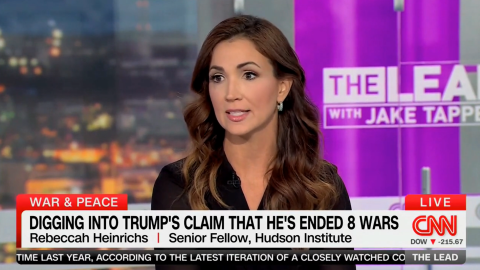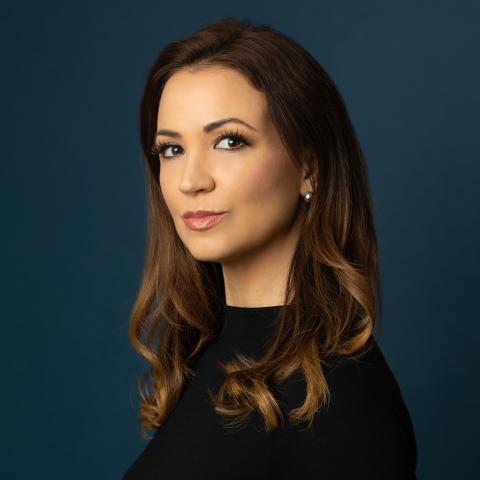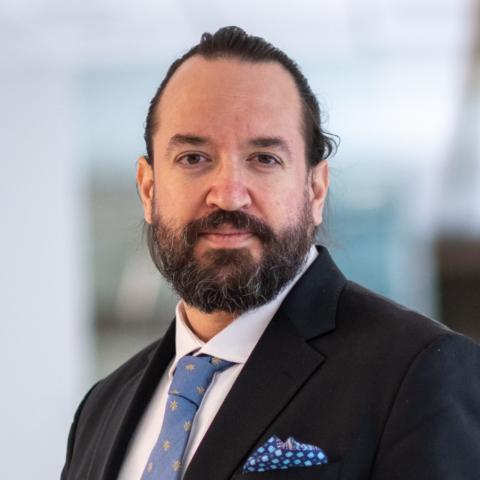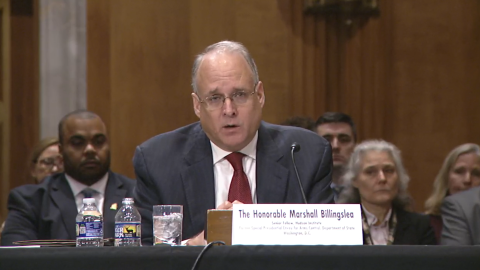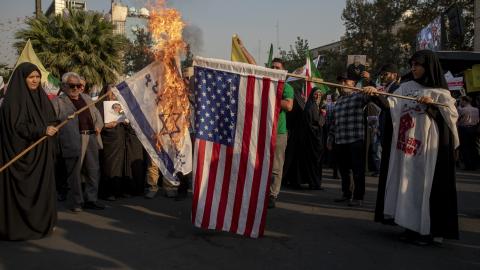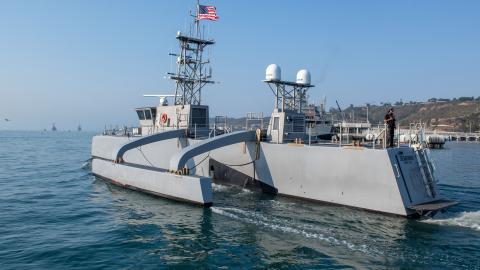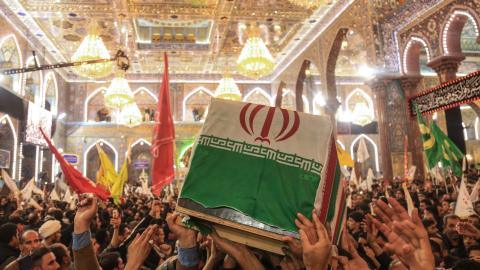The Badr Organization has been described as “Iran's oldest proxy in Iraq,”1 reflecting the paramilitary group’s formation by the Islamic Revolutionary Guard Corps (IRGC) over forty years ago. Despite maintaining close ideological and operational ties to the IRGC, Badr has avoided being sanctioned by the U.S. government in the intervening decades, largely by enfolding itself within Iraq’s democratic political processes and minimizing overt aggression against the United States. Various calls have been made by members of U.S. Congress since 2020 to sanction Badr,2 and Israel has also named them as a belligerent in the Gaza conflict since 2023.3 With legislation under consideration again on the issue of designating Badr leadership,4 this piece will review the recent evolution of the group in the decade spanning the formation of Iraq’s Popular Mobilization Forces in 2014 and the Gaza War since 2023. Many short studies have discussed Badr, and this article builds on their foundation, with the objective of focusing more acutely on the “shared DNA” between Badr and U.S.-designated terrorist groups like Kata’ib Hezbollah, and on the deteriorating trajectory of U.S.-Badr relations since 2019.
Badr’s Iranian Origin
The role of the IRGC in forming and supporting Badr is unambiguous, being supported by a wealth of historic documentation.5 Iranian clerics and IRGC generals6 formed Badr in 1983. The 1980-1988 Iran-Iraq War had entered its third year, and the IRGC sought to build an auxiliary military force7 that combined pre-war anti-Saddam oppositionists (known then as mujahedeen)8 and turncoat Iraqi prisoners of war (known as ahrar) freed by Iran in exchange for service.9 Badr was formed as an infantry unit in the Iranian order of battle, growing to reach brigade strength in 198410 and division strength11 in 1988 (whereupon the IRGC conferred the title of Badr Corps (Failaq Badr) to inflate their apparent numbers).12
The group was organized as a military wing of the Supreme Council for Islamic Revolution in Iraq (SCIRI, Al-Majlis al-Aala li-Thawra al-Islamiyya fi al-Iraq), an anti-Saddam Iraqi oppositionist group formed in Iraq and led by Mohammed Baqer Hakim, an Iraqi from the Islamic Daawa party (Hizb al-Daawa al-Islamiya) who fled to the Islamic Republic of Iran shortly before the Iran-Iraq War began in 1980.13 (Daawa membership was declared a capital offense by Saddam’s regime in 1980.)14 Mohammed Baqer Hakim called the new force the “Badr 9” unit, referring to the battle of Badr, where Muslims overcame great odds to defeat a polytheist army for the first time.15 As Zana Gulmohamad observed, the ideological preparation of Badr fighters “drew inspiration from the Shia Karbala narrative, which places a strong emphasis on themes of martyrdom, sacrifice, and dedication to justice.” 16 The slogan “Jafari rule” (Shi’ite rule) encapsulated the outcome sought,17 what would later be called by SCIRI/Badr leadership “the Shi’ite project” of Shi’ite majority rule in post-Saddam Iraq.18
The ideological framing of Badr was, from the outset, walai, meaning dedicated to the Khomeinist concept of the velayat-e faqih (religious jurisprudence) system that it maintains should be spread to other societies through preaching and armed revolutions.19 The walai orientation of Badr also required unquestioning obedience to Iran’s supreme leader. Hadi al-Ameri, as a young Badr fighter in the 1980s, told an Iranian combat cameraman on an Iran-Iraq War battlefield that “we are with the Imam [Khomeini]…if our Imam says war then we say its war; If Imam says peace then its peace.”20 This is a lifelong commitment and strong anecdotal reporting suggests Hadi al-Ameri and Badr’s other longer-serving leaders view their primary loyalty to Iran’s supreme leader.21
The Political Caste System Within Badr
Badr was a fusion of different types of anti-Saddam oppositionist from the outset, with a kind of “caste” system that has remained evident as the organization has grown.22 At the top of the Badr pecking order are the aforementioned mujahedeen, the Daawa movement militants who worked with the Islamic Republic of Iran and the IRGC since the Islamic revolution and the guard’s foundation. These are broken down even further into the mosafereen (those deported from Saddam’s Iraq)23 and the mohajjereen (those who followed the deportees to Iran).24 The clearest example of a mujahedeen (and a mosafereen) was Abu Mahdi al-Muhandis (real name Jamal Jafar Muhammad Ali Al-Ibrahim), an Iraqi member of Daawa’s covert operations arm who left Iraq prior to 1979 and who worked with the Islamic Republic of Iran’s security services to undertake terrorist attacks in Kuwait in 1983.25 Joining Badr in 1984 after his covert career was blown by the Kuwait operations, he rose to become the military commander of the unit by the war’s end in 1988.26 He later formed the terrorist group Kata’ib Hezbollah, was sanctioned by the U.S.,27 and died in the same U.S. strike that killed IRGC Qods Force commander Qassem Soleimani on January 3, 2020. Today’s leader of Badr, Hadi al-Ameri, appears to be either a mosafereen or a mohajjereen who was trained by the Islamic Republic of Iran as an intelligence officer in SCIRI and who joined Badr around 1986 and became its chief of staff under Muhandis.28 Within Badr, age and years-served are often markers of seniority between this first generation of commanders: as a result, Hadi was loyal and subservient towards Muhandis even after the latter “left” Badr in 2002.29
Then there are newer cadres of Badr members known (somewhat derogatorily) as tawabeen (“penitents,” turncoats who defected to Iran after being captured (the aforementioned ahrar), plus any Sunni-to-Shia religious converts).30 no tawabeen rose to high command within Badr’s military wing.
The newest cadre of Badr senior leaders are the rafha, named after the camp where Iraqi Shia gathered in exile in Saudi Arabia after Saddam’s brutal suppression of the failed 1991 uprising (the intifada).31 Badr’s military wing grew strongly between 1991 and Badr’s invasion of Iraq in 2003 (in parallel to the U.S.-led coalition).32 The most prominent example of a rafha leader within Badr is Iraqi National Security Advisor Qassem al-Araji, who will be discussed below.33 Those who joined Badr after 2003 do not seem to have a generational moniker yet, but they are clearly a large segment of the rank-and-file, with Badr’s military cadre swelling from around 12,000 in 2003 to well over 22,000 troops by 2019.34
Badr’s Military and Political Structure Since 2003
In late 2002, as will be further discussed below, Muhandis handed over control of Badr to his chief of staff Hadi al-Ameri.35 This appears to have happened because Badr and Iran understood in the year-plus build-up to the Iraq war that Badr’s military expeditionary force would eventually need to co-exist alongside U.S. forces inside post-Saddam Iraq and the broader political wing, SCIRI, wished to enter into the new interim governance structures being set up by the Americans.36 Muhandis and a number of other Badr commanders (notably Abu Mustafa al-Sheibani, later sanctioned by the U.S.)37 chose to operate covertly within the new Iraq to undertake missions for and with the IRGC Qods Force, later forming anti-U.S. militant cells such as Kata’ib Hezbollah and Kata’ib Sayyed al-Shuhada, both of which have been designated as terrorist organizations.38
In parallel, SCIRI and Badr began to quickly integrate within the Iraqi political and security transition. Four years after Mohammed Baqer al-Hakim died in a 2003 suicide bombing widely blamed on al-Qaeda in Iraq, SCIRI changed its name to the Islamic Supreme Council of Iraq (ISCI, Al-Majlis Al-Aala Al-Islami Al-Iraqi) in 2007, an apparent effort to somewhat differentiate its brand from Iran’s Islamic Revolution.39 The Badr Corps meanwhile incorporated thousands of its fighters into the middle ranks of the post-Saddam military and interior ministry in a process known as demaj (amalgamation).40 In particular, Badr achieved dominance in Hadi al-Ameri’s native Diyala province, attaining control of the local Iraqi army division (the 5th division) and taking over the Ashraf camp, a major military complex in Diyala that had previously been allocated to Badr’s mirror-image and nemesis, the Saddam-backed Iranian oppositionist group called the Mojaheddin-e Khalq Organization (MeK).41
Badr quickly began to outgrow its old political wing, ISCI, and split off to form its own political bloc in 2012. (At that time, Badr Corps also declared a military wing, Al-Jannah al-Askari li Munadhamat Badr.) Badr’s nominally civilian side shed its military nomenclature and renamed as the Badr Organization of Reconstruction and Development (Munathemaat Badr li al-Imar wa al-Binaa). The movement’s framing subtly changed from a sectarian grievance-based Husseini movement to a nationalist posture (mauquf watani) as well.42 As the power of Badr and other Shiite militias grew, the movement backed away from its support of a pan-Shi’ite region within Iraq (running only part of the country) to a centralized model of governance that would bring all governorates under Shiite majority rule within the Baghdad government.43 Badr also greatly expanded its media operations and societal engagement,44 as well as its role within Iraq’s media regulators.45
In successive local and national elections, Badr outperformed ISCI, which itself splintered again in 2017.46 In Iraq’s most recent national elections in 2021, Badr emerged with only 8 seats after initial seat allocation but hung in during a yearlong government formation process and emerged at the head of the 48-seat Tahalof al-Fatah al-Muben (Conquest Alliance), with 22 seats of its own after the reallocation of seats vacated by MPs whose faction boycotted the new parliament.47 Badr also did reasonably well in the December 2023 provincial elections, with Hadi al-Ameri leading the Talahof Nabni (We Build Coalition), which won four of nine governorships across the Shi’ite south of Iraq.48 Hadi al-Ameri even tried to install the son of a political ally in the Diyala governorship - Mohammed Jassim al-Omairi, the son of the President of the Federal Supreme Court, Judge Jassim Mohammed Abboud al-Omairi – but was foiled as Mohammed did not meet the minimum age requirement of 30 years.49
The Badr-Kata’ib Hezbollah Partnership in the PMF
At least as important, Badr has continued to strongly guide the Iraqi security sector due to its leading role in the formation and growth of the Popular Mobilization Forces (PMF), which were raised to combat the rise of the Islamic State, since 2014. Though Abu Mahdi al-Muhandis was the day-to-day commander of the PMF from 2014-2020, and though he stuffed the institution’s key leadership with Kata’ib Hezbollah commanders, it is undeniable that Badr commanders have also had a strong influence on the PMF. Indeed, as this section will note, many key Kata’ib Hezbollah commanders were themselves openly serving as Badr officers only years before they identified as Kata'ib Hezbollah.
The connective tissue between these two named entities—Badr and Kata'ib Hezbollah—was arguably revitalized during Muhandis’ period in charge of the PMF—an era that reflected the original growth of Badr in the 1980s in many respects. With background as the chief of staff of a multi-division military force built from scratch in around half a decade, it is unsurprising that Hadi al-Ameri played a key role in the creation of the PMF. In building out the PMF after 2014, Hadi once again worked under his old commander, Abu Mahdi al-Muhandis, a recognized designated terrorist throughout the 2014-2020 period. Overseeing the first couple of years of the PMF’s development, Muhandis’s chief of staff, Abu Farkad (Sadiq al-Saadawi), was also a mujaheddin Badrist who will be discussed below.50 In the authors’ view, the re-run of the IRGC-backed formation of Badr in the glory days of the Iran-Iraq War seems to have reawakened something in Hadi al-Ameri and Badr more generally: after that war, the IRGC began to grow and claim its social and economic rewards for the sacrifices it made. Hadi al-Ameri began to adopt the same language—regarding the PMF being the saviors and the rightful inheritors of the nation—during and after the counter-Islamic State war of 2014-2017.51
When Abu Mahdi al-Muhandis died in 2020, the seven-member selection committee that chose his replacement as PMF commander included two serving and two former Badr members. The serving Badr members were Abu Ali al-Basri (Adnan Ibrahim al-Najjar), the PMF inspector general and a mohajjereen holding senior commands in Badr throughout the 1990s, and Abu Muntadher al-Husseini (Tahseen Abid Murat al-Abboudi), a tawabeen officer who rose to command a Badr division by 1999.52 (Both served under Muhandis’ command and served longer in Badr than Hadi al-Ameri.) The two “former” Badr officers (identifying by 2020 as Kata’ib Hezbollah members) were Abu Iman al-Bahali (Adhab Kaytan al-Bahali, serving in Badr intelligence roles until 2014) and Abu Fadak (Abdul-Aziz al-Mohammadawi, who served in Badr under Muhandis and Ameri). The committee chose Abu Fadak to lead the PMF in Muhandis’ place, underlining the very strong Badr-Kata’ib Hezbollah shared lineage and mutual support.53
At the mid-level, the Badr-Kata’ib Hezbollah joint ownership of the PMF is equally evident. Given that Badr was once a fully-fledged multi-division auxiliary of the IRGC, it has played an outsized role in the centralized maintenance, provisioning, and training of the PMF. For instance, the PMF training directorate was set up and run by a combined Badr-Kata’ib Hezbollah staff54 led by Abu Bilal al-Jabiri (Kadhim Jabr Jasim al-Jabiri),55 originally a Badrist56 with a track record of working with Kata’ib Hezbollah.57 Muhandis’ focus on professionalization and training for the PMF was championed by the aforementioned Abu Ali al-Basri (Adnan Ibrahim al-Najjar), who spearheaded the effort to get PMF officers fast-tracked through professional military education colleges at Nasiriyah and Rustamiyah (in Baghdad) in order to meet the standards to command non-PMF formations of the Iraqi security forces (much as Iran’s IRGC commanders can lead Iranian regular military services and formations).58 The PMF education directorate is likewise championed by Badr officers, notably Abu Muntadher al-Husseini, and now sends PMF officers for professional military education on Iran-paid scholarships to Iran.59
The PMF logistics branch was likewise established by a Badrist,60 and PMF logistics (including those functions supporting U.S.-designated terrorist organizations) have historically relied upon Badr’s national-level maintenance depots61 and military industries,62 both of which are jointly run with Kata’ib Hezbollah officials. The heavy weapons branches of the PMF—anti-armor, artillery, missiles, and armor—were all built from Badr cadres and commanders working closely under Kata’ib Hezbollah.63 High-end materiel provided by Iran to the PMF in the counter-Islamic State war (i.e., T-72 tanks, Kornet-type guided missiles, and HM-20 and HM-27 multiple-barrel rocket launchers) tended to be provided through Badr.64
Looking to the future, Badr has many structural advantages that make it ideal for bypassing U.S. export controls on Iran.65 Its many front companies and affiliated businesses provide it with the finances, commercial infrastructure, and plausible justification for the import of various commercial products. Meanwhile, Badr’s extensive logistic infrastructure and influence within Iraq’s government, and close relationship with the IRGC provides it with additional advantages useful for importing then re-exporting items to Iran.66
Growing Tension With the United States
The above sections give more than enough cause for concern to American policymakers in terms of Badr’s closeness to the IRGC and other terrorist organizations. Badr has frequently adopted the narratives of al-Muqawama al-Islamiya (Islamic Resistance) in Iraq and has consistently sought (at least rhetorically) the withdrawal of U.S. combat forces from the region67 and has conspiratorially accused the U.S. of being the hidden hand behind the rise of the Islamic State.68 Yet while Kata’ib Hezbollah and other groups are open about their efforts to physically attack U.S. and partner forces, Badr distances itself publicly from such actions and its leader, Hadi al-Ameri, was even allowed to visit the White House in 2011.69
Badr certainly has employed persons linked to international terrorist attacks, for instance Abu Mahdi al-Muhandis, who held command positions in Badr after the Kuwait bombings in the early 1980s. Persons who had served in Badr also regularly took part in anti-U.S. terrorist acts after 2003, notably Abu Mustafa al-Sheibani and Qassem al-Araji. Though typically described by the U.S. government as “former” Badr personnel serving in “special groups” at the time, some declassified U.S. intelligence reporting does directly link Badr to “weapons smuggling from Iran into Iraq.”70 United States federal courts have found that Iran provides material support for Badr, and that Iran has directly sponsored Badr’s activities in Iraq, including the gathering of intelligence and acts of sabotage and subversion in southern Iraq.71 Badr has also been directly implicated in serious human rights abuses, including wartime massacres of Sunni civilians72 and the mass shooting of unarmed civilian protestors in the 2019 “Tishreen” uprising against the Badr-supported government of Prime Minister Adel Abdal-Mahdi (a former SCIRI and ISCI politician).73 Any of the above issues could arguably justify U.S. designation of Badr on counter-terrorism or human rights grounds.
As important, the trend line in U.S.-Badr relations has deteriorated in recent years. Badr has been notably more hostile towards the United States since 2019–2020, the years in which the first Trump administration unleashed “maximum pressure” on Iran; when the PMF’s inheriting of the state seemed to be threatened by the aforementioned Tishreen protests; and when IRGC Qods Force commander Qassem Soleimani and Abu Mahdi al-Muhandis—mentors to generations of Badr leaders—were killed in a U.S. airstrike in Baghdad.74 Maximum pressure seems to have triggered more aggressive impulses in Badr as it sought to protect its founder, the IRGC, and its close relative, Kata’ib Hezbollah. Thus, in April 2019, Badr’s Abu Farkad (Sadiq al-Saadawi) held a press conference denouncing the U.S. designation of the IRGC as a Foreign Terrorist Organization.75 In that year, Badr took over the Iraqi Civil Aviation Authority and began closing airspace above Kata’ib Hezbollah’s main base to coalition surveillance flights.76 Badr’s former head of intelligence, Ali Taqqi, took over as director of Baghdad International Airport, and controversially transferred the baggage handling contract to a front company controlled by Kata’ib Hezbollah77—putting a U.S.-designated terrorist organization in charge of loading bags onto aircraft with direct routes to European capitals.
Later in the year, after December 28 U.S. airstrikes on Kata’ib Hezbollah sites, Badr’s leaders played a key role in violent attacks on the U.S. embassy in Baghdad on December 31, 2019.78 On the eve of the attacks, Hadi al-Ameri attended a coordination meeting at a farm in Zafraniya, Baghdad, owned by U.S.-designated terrorist Shibl al-Zaydi.79 Other attendees included U.S.-designated terrorists Akram Kaabi, leader of Harakat Hezbollah al-Nujaba (HaN); Qais al-Khazali, leader of Asaib Ahl al-Haq (AAH), Abu Ala al-Walai, leader of Kata’ib Sayyid al-Shuhada (KSS); and Ahmad Mohsen Faraj al-Hamidawi, secretary-general of Kata’ib Hezbollah.80 On December 31, 2019, U.S. Secretary of State Mike Pompeo wrote on X: “The attack today was orchestrated by terrorists – Abu Mahdi al-Muhandis and Qais al-Khazali – and abetted by Iranian proxies – Hadi al-Ameri and Faleh al-Fayyad. All are pictured below outside our embassy.”81 The killing of Soleimani and Muhandis likely deepened the pre-existing grievance between Badr and the United States.
Badr’s Role in Threatening Israel
Badr’s support for terrorist attacks on Israel has also become more evident in recent years and has brought Badr closer to direct confrontation with the United State. On October 10, 2023, following Hamas’s attacks on Israel, Hadi al-Ameri uncharacteristically threatened: “If the Americans intervene in the battle with Hamas, we will attack all U.S. targets. Therefore, they need to stop the support for this Zionist entity.”82 On October 30, Hadi al-Ameri demanded a “short-term timetable” for the departure of U.S. forces from Iraq and described attacks on U.S. bases in Iraq as “a natural reaction to the bias of America and some European countries toward the usurping Zionist entity.”83 Hadi al-Ameri’s increasingly angry remarks appeared to break his longstanding habit of not explicitly calling for the killing of Americans. The Gaza conflict is another forcing mechanism that has encouraged Badr to openly “pick a side” in the U.S.-Iran conflict.
Israel has likewise become increasingly focused on Badr due to its closeness to the IRGC and its control of military infrastructure and forces linking Syria and Iraq. In a November 2024 letter to the United Nations, Israel named Badr as one of the Iran-backed factions attacking Israel from Iraq.84 However, Israeli concerns about Badr’s provision of lethal aid to terrorist attacks goes back further. Badr sent groups of fighters to Syria in 2012–2014 to fight alongside the Syrian regime and under direct IRGC control as part of Badr-al-Janah al-Askari fi Suriya (the Badr military wing in Syria).85 Badr’s control of the Iraqi Ministry of Transport for at least eight of the fourteen years since the start of Syria’s civil war provided opportunities to facilitate the “air bridge” between Iran and Syria or Lebanon, including through the use of Iraq’s airlines.86 In July 2019, mystery airstrikes damaged Badr’s Camp Ashraf in Diyala province, apparently part of an Israeli effort to interdict shipments of missile and drone components from Iran to Syria via the “land bridge” of Iraq.87 Advanced Iranian unmanned combat aerial vehicles such as the Mohajer-6 have also been showcased at Ashraf since 2021.88 One of the drone attacks on Israel in June 2024 by the Iraqi muqawama was dedicated to a fallen Badr fighter,89 interestingly the same man that Camp Ashraf was renamed to honor.90
Another intersection with Ashraf, and a very recent example of Badr’s provision of support to terrorists, is the apparent hosting of foreign fighters from U.S.-designated terrorist groups at the base.91 Liwa Fatemiyoun (composed of Pakistani Shi’ites) and Liwa Zainabiyoun (composed of Afghans) are both directly controlled by the IRGC. 92 Badr is reported to have arranged for the transport of these forces to Camp Ashraf and other Badr-linked camps in Iraq93 after the units were ejected from Syria after the fall of the Assad regime in December 2024. Transporting, housing, and sustaining these terrorist forces surely meets the criteria for the provision of material support.
Badr as a Source of Terrorist Financing
Badr may not be the fastest growing pro-Iranian group in Iraq, but it does show political resilience, and it is extraordinarily skilled at extracting financial value from the Iraqi public and private sectors. In combination with Badr’s demonstrated closeness to the Iranian regime, this makes Badr a potent player in terrorist threat financing. Badr hit the ground running in post-Saddam Iraq and has developed powerful networks in the military, parliament, government ministries (e.g., transport, interior, finance), the Federal Supreme Court, local governments, investment committees, and media regulators and anti-corruption agencies. Based on the author’s long view of Iraqi governance, there are very few rivals able to compete with the sophistication an experience of Badr in the design and execution of mega-corruption initiatives, nor the breadth of Badr’s organized crime activities.
With regard to mega-corruption, the best single case study of Badr’s capacity is the so-called Heist of the Century, which investigations by the Guardian and the Economist laid at Badr’s door.94 According to the Guardian, the $2.5 billion fraud was “masterminded by a well-connected businessman and executed by employees in the tax commission, who enjoyed the support of an Iran-aligned political faction called Badr.”95 The heist was a multi-year (2015–2021) effort by Badr officials to access tax deposits, first only temporarily used to float currency speculation and access U.S. dollars, and later to completely empty the accounts.96 It is an example of the kind of patient, years-spanning efforts that Badr undertakes when working out how to structure a corruption scheme. One of the key architects of the scheme, Noor al-Zuhair, escaped accountability or repayment of the stolen monies due to the protection of Hadi al-Ameri,97 and the Badr-run Committee on Integrity98 misdirected the investigation away from the actual culprits.99 A relative of Ameri’s in the Central Bank of Iraq anti money-laundering department further insulated the scheme from investigation.100
Badr’s grip on the Ministry of Transport101 and its ports has given the movement a second avenue for mega-corruption and organized crime. All projects signed by the ministry generate a financial percentage of the contract value for Badr’s leadership.102 The Grand al-Faw Port Project and expansion of other ports and navigation channels under the General Company for Ports in Iraq; the State Company for Marine Transport and the Iraqi Oil Tankers Company; airport projects, new rail lines, and multi-nodal freight projects are all in the hands of Badr-linked officials and businesses, including the architects of the Heist of the Century.103 Some of these projects—such as digital vessel management and digital barrel-tracking of oil volumes—could revolutionize Badr’s illicit access to unmonitored quantities of oil and petroleum products,104 and its ability to facilitate large-scale Iran sanctions evasion.105 In addition to these mega-projects, Badr works industriously every day to monetize its ability to block (and then resolve) approvals for investment opportunities and land grants.106 Hadi al-Ameri’s greed for agricultural investment projects is legendary, with each example bringing free land grants and the right to import large quantities of building materials from Iran without paying customs duties.107 Then there is plain-old organized crime, increasingly focused on the major money-maker of drugs trafficking. In particular, a Badr officer (Mehdi Taqi al-Amerli), working under the authority of Hadi al-Ameri, leads the importation of crystal meth from Iran via the Amerli area of northern Salah al-Din.108
Critical from a U.S. perspective, a portion of these revenues flow back into the “mother ship,” namely the IRGC in Iran. A variety of Badr officials send multi-million dollar consignments of U.S. dollars to Iran each month: Hadi al-Ameri’s financial assistant Abu Dhia al-Basri (whose nom-de-guerre, since the Iran-Iraq war, is Mehdi Saleh al-Bubsairi); the head of Badr’s economic committee Dr. Mohammed al-Khalisi; the head of Badr’s Special Economic Committee, Sayyed Wahab (Wahab Ali Abbas); commander of PMF Diyala Operations Command Taleb al-Musawi (Taleb Mohammed Hussein); and Hadi al-Ameri’s Jihad Assistant and head of the PMF Tigris Operations Command Abu Husam al-Sahlani (Hamid Ibrahim Abdal-Ridha).109 The latter two also facilitate the movement of stolen oil between federal Iraq and Iran due to their control of the northern and eastern parts of Diyala, Salah al-Din, and Kirkuk provinces.110
Policy Implications
Despite a multi-decade track record of corruption, state capture, human rights abuses, and terrorist activities, Badr has consistently escaped serious regulatory or law enforcement sanction by the U.S. government and its allies. Despite this inaction, the United States at least has various regulatory tools available which could justifiably be used to punish Badr’s hostile or illicit activities while dissuading legitimate actors from engaging with the group.111 These activities can and should be imposed in a cautious and targeted manner to impose financial and temporal costs on this important Iranian asset while encouraging affiliates to distance themselves from illicit activities. Badr’s activities and affiliations mean it is almost certainly eligible for sanctioning under at least three extent sanctions programs.
The U.S. Treasury could designate Badr as “Specially Designated Global Terrorists” (SDGT) pursuant to Executive Order 13224 (as amended).112 This has been applied to Kata’ib Hezbollah and Kata’ib Sayyed al-Shuhada, both Badr descendants and close affiliates. Asa’ib Ahl al-Haq and Harakat al-Nujaba are also sanctioned under this authority. The U.S. government has great latitude113 to sanction those deemed to pose a terrorist threat,114 as well as supporters and affiliates of previously designated terrorists. Even if based solely on open-source information, Badr’s activities, past and present, are likely sufficient for the organization to be eligible for designation under SDGT. As outlined above, Badr has committed acts which would fall under the definition of terrorism laid out in Executive Order 13224. Moreover, Badr employs individuals known to have engaged in terrorism and provides material support to various entities and individuals already designated under the SDGT program. Badr’s coercive activities (and support to others engaged in violent coercion) designed to capture and control parts of the Iraq state and its government have also contributed to the capture of the world’s fifth largest oil producer, placing state-level resources and financing in the hands of militias and Iranian proxies hostile to the United States.115 In short, therefore, the U.S. Secretaries of State and the Treasury are likely able to sanction Badr as Specially Designated Global Terrorists.
Badr could also be designated as a Foreign Terror Organization (FTO),116 as in the case with Badr’s founder, the IRGC, and Badr’s offshoot organization, Kata’ib Hezbollah. Some of Badr’s activities almost certainly meet the criteria for designation as an FTO.117 Equally importantly, Badr’s ongoing material support to Kata’ib Hezbollah is also sanctionable activity. Kata’ib Hezbollah, an FTO in its own right, has frequently attacked U.S. personnel and interests while contributing to regional instability. Badr’s ongoing relationship with the IRGC also means that Badr likely “engages in terrorist activity” due to various forms of material support that Badr provides to its Iranian affiliate. This activity would further support the organization’s eligibility for designation as an FTO.
Badr also has a track record of human rights and corruption offenses that make it eligible for Global Magnitsky sanctions.118 Badr participated in wartime massacres of Sunni civilians and the mass shooting of unarmed civilian protestors in the 2019 “Tishreen” uprisings. Meanwhile, its role in government capture, the theft and diversion of Iraq’s natural resources and oil wealth, and the “Heist of the Century” scandal are all likely sufficient grounds for Badr officials and affiliates to be eligible for sanctioning under the Global Magnitsky program.
U.S. export controls119 are a fourth area where sanctions on Badr might prove beneficial. As noted above, Badr provides Iran and even terrorist groups like Kata’ib Hezbollah with a workaround to U.S. export controls on dual-use materiel, including drone components. This potential to facilitate U.S. export control evasion would be significantly limited, however, if Badr was to be sanctioned as an FTO or SDGT. This is because a designation under these programs subjects the designee to an additional export licensing requirement (thereby providing the U.S. government an opportunity to scrutinize and potentially deny exports to the designee). Alternatively, the U.S. could close Badr’s export loophole without resorting to sanctions by imposing specific license requirements120 on Badr affiliates. Such a listing would be useful both as a way to limit Badr’s utility to Iran as a possible source of otherwise embargoed products, but also as a less politically explosive tool to place a “shot across the bow” of Badr.121
Given the eligibility of Badr to be sanctioned under a host of existing U.S. legislation, regulations, and executive authorities, why has the organization not been targeted in any of these ways yet? The decision to spare the organization thus far may have resulted from specific policy considerations. Badr is much larger than other Iraqi militias subject to sanctioning and has an extensive role in Iraq’s government and its wider economy. Perversely, Badr therefore has made itself safer from sanctions with every passing year due to the success of its state-capture efforts, becoming “too big to fail.” Badr’s apparent integration into the system is even sometimes hailed as a demobilization, disarmament, and reintegration (DDR) success, but it is worth asking if, in fact, the system has been swallowed by Badr instead. It is also worth pondering whether any member ever really leaves Badr, being that Badr is the parent unit within the IRGC from which Kata’ib Hezbollah’s manpower has largely been “seconded,” and to which they may return one day. If Badr, Kata’ib Hezbollah, and the IRGC are as tightly connected as this article suggests, it may be foolish to be concerned that sanctioning Badr would push them closer towards these terrorist groups, as it is occurring in plain sight on a daily basis anyhow. The moment to “turn” Badr probably passed over a decade ago, before the PMF formed, before Muhandis was killed, and before the Gaza war broke out.
Failure to take meaningful actions against Badr in recent years has left one of Iran’s most effective proxies able to operate almost uncontested within Iraq, while sending a message that Badr, its leaders, and its members can act with relative impunity. Given Badr’s track record, any extant policy of avoiding sanctioning the group should be revisited. At a minimum, limited sanctions against key leaders and limited elements of the wider group—for example, mosaffereen and mohajjereeen—should be imposed to encourage wider behavioral changes. Badr is always susceptible to splintering due to its generational caste system, and the U.S. government may want to take this into account, favoring tawabeen and especially rafha Badrists with less aggressive treatment.


